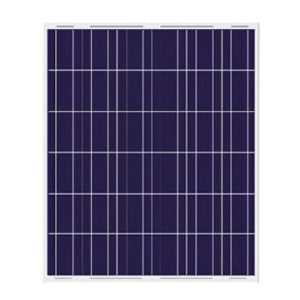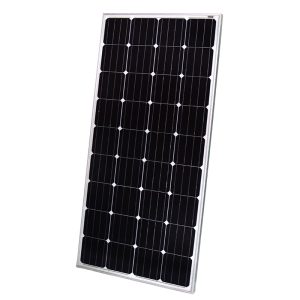As electricity prices continue to rise and interest in sustainable living grows, solar systems have become an increasingly popular choice for homeowners and businesses. A 700-watt solar system is particularly well-suited for medium-scale energy needs, offering a balance between performance and affordability. This article provides a comprehensive overview of 700-watt solar systems, covering their benefits, components, sizing considerations, installation process, and potential cost savings, offering insights to help you make an informed decision.
Benefits of a 700-Watt Solar System
700-watt solar systems offer numerous advantages that make them an ideal choice for individuals looking to harness solar power. Some key benefits include:
- Significant Cost Savings: By generating your own electricity from solar power, you can substantially reduce or even eliminate your electricity bills, saving a considerable amount of money in the long run.
- Environmental Sustainability: Solar energy is a clean, renewable power source that helps reduce your carbon footprint and promotes a more sustainable lifestyle.
- Energy Independence: Generating your own electricity with a solar system reduces your reliance on traditional utility companies, increasing your energy independence.
- Increased Property Value: Solar systems can enhance the value of your property, making it more attractive to potential buyers.
- Government Incentives: Many governments offer tax credits, rebates, and other financial incentives to encourage solar adoption, making it more economically viable.
Components
A 700-watt solar system consists of several key components that work together to capture, convert, and store solar energy. These components include:
- Solar Panels: Solar panels are the heart of the system, responsible for converting sunlight into electrical energy. A 700-watt system typically includes two 350-watt panels or multiple lower-wattage panels, depending on available space and desired energy output2. It’s important to choose efficient and durable panels to maximize performance and longevity. Monocrystalline panels generally offer higher wattage density, while thin-film panels are less efficient and require more area for the same output.
- Inverter: The inverter converts the direct current (DC) electricity produced by the solar panels into alternating current (AC) electricity used by household appliances and devices. When selecting an inverter, it’s crucial to consider the total wattage of the system and peak load requirements. For optimal efficiency, it’s recommended to use a high-quality inverter.
- Batteries (Optional): Batteries store excess energy generated by the solar panels for use when sunlight is unavailable, such as during nighttime or cloudy days. The addition of a battery backup system enhances energy independence, allowing you to power your property during grid outages. Lead-acid and lithium-ion batteries are common types, with lithium-ion offering higher efficiency and longer lifespan but at a higher cost.
- Charge Controller: The charge controller regulates the current flowing to the batteries, preventing overcharging and optimizing battery life. It ensures that batteries are charged and discharged in a safe and efficient manner. Options include pulse width modulation (PWM) controllers or maximum power point tracking (MPPT) controllers, with MPPT controllers typically being more expensive but offering higher efficiency, especially for larger systems or in less-than-ideal lighting conditions.
- Mounting Hardware: Mounting hardware includes the brackets, racks, and wires necessary for installing the solar panels and connecting the system. It’s important to choose durable and weather-resistant mounting hardware to ensure long-term reliability and safety of the system.
Sizing Considerations
Determining the appropriate size for a 700-watt solar system requires careful consideration of your energy needs, available space, geographical location, and budget.
- Energy Consumption Assessment: The first step is to evaluate your average daily and monthly electricity consumption. You can refer to your electricity bills or use energy monitoring devices to gather this data. Understanding your energy usage patterns will help you determine the number of solar panels needed to meet your requirements.
- Peak Sun Hours: Peak sun hours refer to the length of time during the day when solar radiation is strong enough to produce a specific output. The peak sun hours in your location will affect the energy output of your solar panels. You can obtain peak sun hour data for your location from online resources or solar professionals.
- Available Space: The physical space required for solar panels will depend on their size and quantity. Assessing the available space on your roof or ground will help you determine the system size that fits your property.
- Budget: The cost of a 700-watt solar system will depend on the components used, system size, and installation costs. When determining system size, balance the desired energy output with financial constraints.
Installation Process
Installing a 700-watt solar system requires specialized knowledge and skills. While DIY installation is possible, it’s strongly recommended to seek the assistance of qualified solar professionals to ensure safety and optimal performance. The installation process typically involves the following steps:
- Site Assessment: A qualified solar installer will conduct a site assessment of your property to determine the best locations for installing solar panels, evaluate available space, and identify the necessary mounting hardware.
- Permitting: In most areas, installing a solar system requires permits and approvals from local authorities. The installer will assist you with the permitting process.
- Mounting Hardware Installation: The installer will set up the solar panel mounts, wiring, and conduits in preparation for panel installation.
- Solar Panel Installation: The solar panels will be securely mounted on the racks and properly wired to ensure efficient energy collection.
- Inverter and Battery Connection: The inverter and batteries (if applicable) will be connected to the solar panels and properly wired and configured.
- System Commissioning: Once the system is installed, the installer will perform a comprehensive commissioning to verify that all components are functioning correctly and generating power as expected.
- Net Metering Connection (if applicable): If you plan to sell excess solar power back to the grid, the installer will assist you with the net metering connection process, including coordination with your utility company.
Potential Cost Savings
A 700-watt solar system can provide significant savings on your electricity bills, with the exact amount depending on your energy consumption, geographical location, electricity rates, and available government incentives.
- Reduced Electricity Bills: By generating your own electricity from solar power, you can reduce your reliance on the grid, lowering your electricity bills. The more energy your solar system produces, the greater your electricity bill savings.
- Net Metering: In many areas, homeowners can sell excess solar power back to the grid, earning bill credits or cash payments through net metering. This policy can further enhance your financial returns and shorten the payback period of your solar investment.
- Government Incentives: Many governments offer tax credits, rebates, and other financial incentives to encourage solar adoption. These incentives can significantly reduce the initial cost of a solar system, making it more economically viable.
Maintenance and Care
Regular maintenance and care are crucial to ensure your 700-watt solar system operates efficiently and reliably for years to come.
- Cleaning: Regular cleaning of solar panels is essential for maintaining their optimal performance. Dust, debris, and other contaminants can block sunlight and reduce energy output. Clean the panels with clean water and a soft brush or cloth.
- Visual Inspection: Conduct regular visual inspections of the solar panels for any signs of damage, corrosion, or loose connections. If any issues are detected, contact a qualified technician for repairs immediately.
- Performance Monitoring: Monitoring your solar system’s performance can help you detect any potential issues early. Many systems come with monitoring capabilities that allow you to track energy output, battery levels, and other key metrics.
- Professional Inspection: It’s recommended to have a professional inspection conducted by a qualified technician annually or bi-annually. They will perform a comprehensive check of the system to ensure it’s functioning correctly and address any potential issues.
Conclusion
A 700-watt solar system offers a sustainable, cost-effective, and reliable solution for meeting energy needs in various residential and commercial applications. By understanding the system’s benefits, components, sizing considerations, installation process, and potential cost savings, you can make an informed decision and start enjoying the numerous advantages of solar power. As electricity prices continue to rise and government incentives become more prevalent, investing in a solar system has become both a wise financial decision and a positive step towards a greener future.



